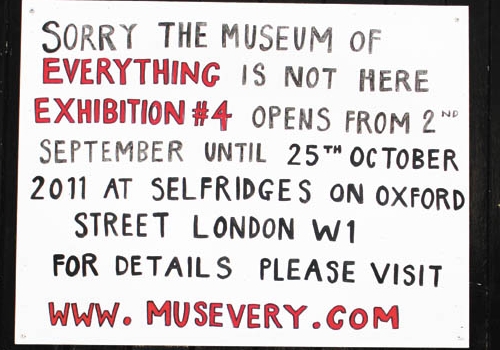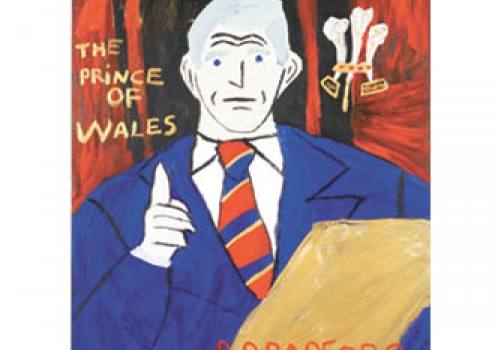Home >> News >> 2011 >> Oct >> Quirky Primrose Hill gallery takes to the road - Museum of Everything decamps to Selfridges
Quirky Primrose Hill gallery takes to the road - Museum of Everything decamps to Selfridges


Published: 06 October 2011
by GEORGIA GRAHAM
AN art gallery that became world famous from a side street in Primrose Hill is leaving the neighbourhood after just two years.
A former dairy and music recording studio, the Museum of Everything, in Sharpleshall Street, was put together by James Brett in 2009 and within weeks was heralded as a quirky studio for the “outsiders” of the art world.
However, Mr Brett said he had dealt with animosity from some quarters and had never been encouraged to create long-term plans for the studio.
He said: “I will say that local politicians did not encourage our permanence – even though the museum stuck to the letter of the law throughout.
“We brought 50,000 people into Primrose Hill between October and February – that is a huge amount of traffic to the local area and the place is now known around the international art world, which it would never have been without it.”
Currently, for its fourth exhibition, the Museum of Everything has decamped to the basement of Selfridges – an incongruous venue for a gallery that has always been self-consciously outside of the mainstream.
Despite the corporate setting, the latest show consists of works solely by artists with developmental and physical disabilities.
They are showcasing their works without further reference to their difficulties and asking visitors to view them simply as pieces of art.
Higgledy-piggledy rooms designed by The King’s Speech set designer Eve Stewart provide the backdrop.
One wall is papered with American artist Ruby Bradford’s homage to the British royal family, while in another corner, Harald Stoffers’ garbled letters to his mother line the wall.
Mr Brett said: “I love working in Camden. It is where I have grown up – I love that it is a real mix of high and low culture.
“Primrose Hill was great for what we needed – doing the first two shows there was fantastic.”
He added: “I want people to see the shows and the art unhampered by a physical space – if you challenge people with the environment of the show then the safety zone changes and you should get more engagement.
“When people are comfortable or familiar with a space it softens the experience. We are not interested in being limited by a physical space – leaving Primrose Hill is a very active decision.”
The future of the museum, Mr Brett says, could be something like the American Folk Art Museum in New York, a moving installation on the Trans Siberian Express or even just the street – in short, somewhere a bit weirder than Primrose Hill.




Comments
Post new comment